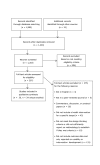Design Thinking in Health Care
- PMID: 30264690
- PMCID: PMC6178900
- DOI: 10.5888/pcd15.180128
Design Thinking in Health Care
Abstract
Introduction: Applying Design Thinking to health care could enhance innovation, efficiency, and effectiveness by increasing focus on patient and provider needs. The objective of this review is to determine how Design Thinking has been used in health care and whether it is effective.
Methods: We searched online databases (PubMed, Medline, Web of Science, CINAHL, and PyscINFO) for articles published through March 31, 2017, using the terms "health," "health care," or "healthcare"; and "Design Thinking," "design science," "design approach," "user centered design," or "human centered design." Studies were included if they were written in English, were published in a peer-reviewed journal, provided outcome data on a health-related intervention, and used Design Thinking in intervention development, implementation, or both. Data were collected on target users, health conditions, intervention, Design Thinking approach, study design or sample, and health outcomes. Studies were categorized as being successful (all outcomes improved), having mixed success (at least one outcome improved), or being not successful (no outcomes improved).
Results: Twenty-four studies using Design Thinking were included across 19 physical health conditions, 2 mental health conditions, and 3 systems processes. Twelve were successful, 11 reported mixed success, and one was not successful. All 4 studies comparing Design Thinking interventions to traditional interventions showed greater satisfaction, usability, and effectiveness.
Conclusion: Design Thinking is being used in varied health care settings and conditions, although application varies. Design Thinking may result in usable, acceptable, and effective interventions, although there are methodological and quality limitations. More research is needed, including studies to isolate critical components of Design Thinking and compare Design Thinking-based interventions with traditionally developed interventions.
Figures


References
Publication types
MeSH terms
Grants and funding
LinkOut - more resources
Full Text Sources
Other Literature Sources
Medical

